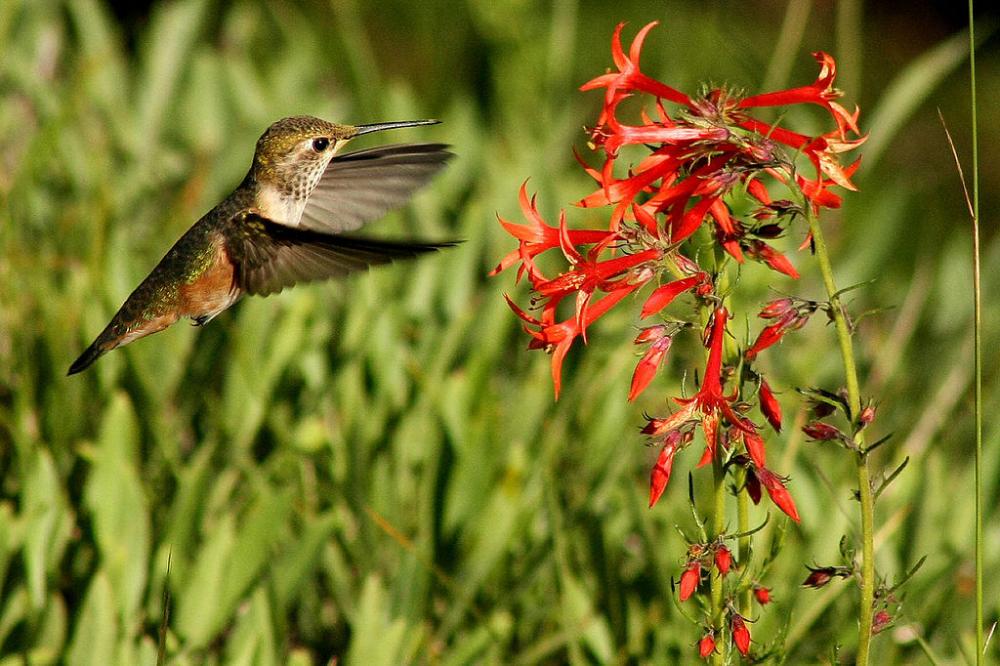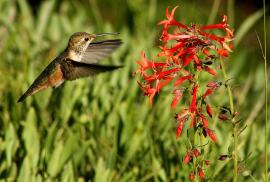Guide to Boreal Birds
Overview
In the East, this species is known as a scarce migrant and winter visitor to Louisiana and Florida. While in that area it feeds chiefly on the flowers of hibiscus and salvia, which often bloom all winter long. A few birds generally spend the winter but may disappear abruptly when the first severe cold spell occurs. Hummingbirds share certain traits. The first bird to discover a source of food defends it. Even when satiated, it will perch nearby and intercept intruders in the air with angry buzzing. If a female is disturbed when feeding, she gives a "no trespassing" signal by fanning and waving her tail. Females, therefore, have developed distinct tail patterns, whereas males, facing the opponent, signal with their brilliant throat patches, called gorgets.
Description
3 1/2-4" (9-10 cm). Male has bright rufous upperparts and flanks and iridescent orange-red throat. Female green above, with rufous tinge on rump and flanks, and much rufous in tail. Adult male Allen's Hummingbird has green crown and back; female and immature Allen's not safely separable from Rufous in field, but have narrower outer tail feathers. Female Ruby-throated and Black-chinned similar, but lack rufous on rump and flanks. See Calliope and Broad-tailed Hummingbirds.
Voice
An abrupt, high-pitched zeee; various thin squealing notes.
Nesting
2 white eggs in a lichen-covered cup of plant down and spiderweb attached to a horizontal branch.
Habitat
Mountain meadows, forest edges; on migration and in winter frequents gardens with hummingbird feeding stations.
Range/Migration
The details of the spring migration of this species are poorly known. One source of confusion is the fact that the females of this species are virtually identical to those of the closely related Allen's Hummingbird, which precede them up the U.S. west coast. The first Rufous males reach the southern part of their breeding range in central Oregon as early as late February, while other individuals are still moving through the vicinity of Jalisco, Mexico. The bulk of the Allen's population moves through central California in mid-April. The return migration in fall is primarily to the east, through the Sierra Nevada, the Great Basin, and the highest portions of the Rockies, timed to coincide with the bloom of high-elevation nectar sources.
Breeds from southeastern Alaska, British Columbia, southwestern Alberta, and western Montana south to Washington, Oregon, Idaho, and northern California. Winters mainly in Mexico. Occurs in small numbers along Gulf Coast during migration and in winter.



